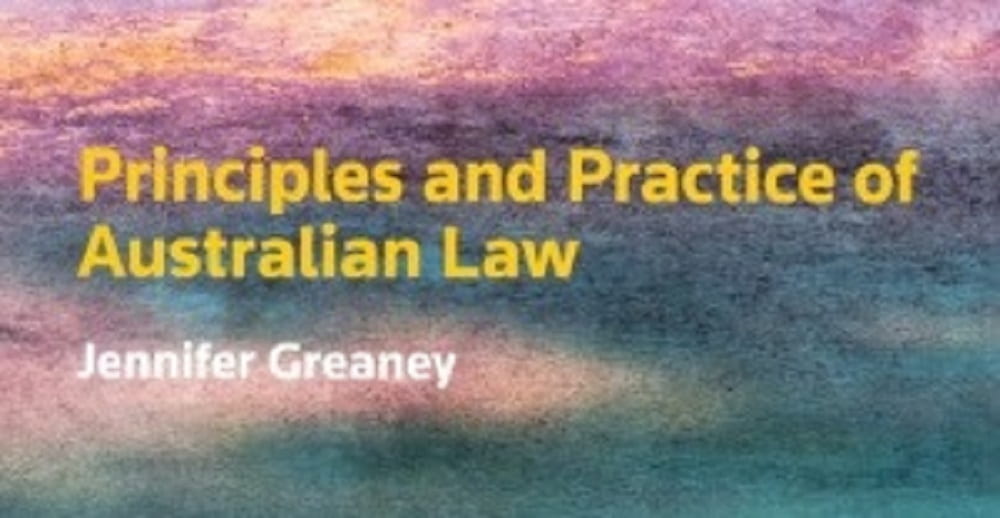 Jennifer Greaney has been a tutor, a school teacher, a social worker, an administrator, a retailer, a band manager, a landholder and a performer. She is also a long-standing member of the University of New England (UNE) School of Law. Jennifer can do just about anything but, primarily, she is an educator and a purveyor of skills and knowledge.
Jennifer Greaney has been a tutor, a school teacher, a social worker, an administrator, a retailer, a band manager, a landholder and a performer. She is also a long-standing member of the University of New England (UNE) School of Law. Jennifer can do just about anything but, primarily, she is an educator and a purveyor of skills and knowledge.
Jennifer has called upon her experience in lecturing and guiding first year law students in the revision and expansion of the text Principles and Practice of Australian Law which is now in its fourth edition. The text was originally authored by Elizabeth Ellis who worked for a number of years at the University of Wollongong.
The text takes a different approach to the usual introductory law text which discusses concepts in the linear and reductionist fashion of, “This is the law; These are the sources of the law; This is how you find the law; This is how you read the law; and This is how you discuss the law.” The text adopts a systemic approach by utilising an integrated, conceptual framework. The text introduces the reader to foundation legal principles such as the nature and sources of law, origins of the Australian legal system, the constitutional framework, legal institutions and processes, access to the law, judicial decision-making (common law), statutory interpretation and law in practice.
The text propounds the importance of legal skills. A competent law student should be able to identify legal issues, research legal principles, apply statutory interpretation and communicate reasoned arguments. Offsets in the chapters ask the reader to practise skills and discuss the issues. This engenders an attitude change in the reader on the role of law and the purpose of the legal system. It also plants the seed in the reader’s mind that they can be agents for legal reform.
Students must come to terms with the contention that ‘the law’ does not live in a bubble insulated from the influence of society, political institutions, economic institutions, human foibles and moral norms. The text adopts a legal-realism platform in many areas; that is, the law is an arbitrary product of interpretation by the courts and the discretionary powers of enforcement agents. For example at [8.180] it is stated:
The idea that there are different versions of law can be illustrated by asking: what is the law in giving reasonable directions in public place in New South Wales? For the traditional lawyer, the answer is “ss197-200 of the Law Enforcement (Powers and Responsibilities) Act 2002 (NSW)”. Yet because law cannot be understood in isolation from those who interpret it, a better answer might be “ss 197-200 as enforced by the police”.
The text prods the reader to think more deeply about the nature of law and the influence of ethics, morals and social values upon the interpretation of the law. The text is an ideal implement to improve the skills and expand the thought processes of law and legal studies students. For practitioners, it is well worth perusing Chapter 5 – Access to Law – to refresh key concepts such as the recognition of rights and interests, improving access to justice, as well as legal education and ethics.
Jennifer Greaney, Principles and Practice of Australian Law (Lawbook Co, 4th ed, 2020) is available for $100.80 plus shipping through UNE Life Campus Books.
About the reviewer

Dr Kip Werren
Lecturer & Course Coordinator
School of Law



